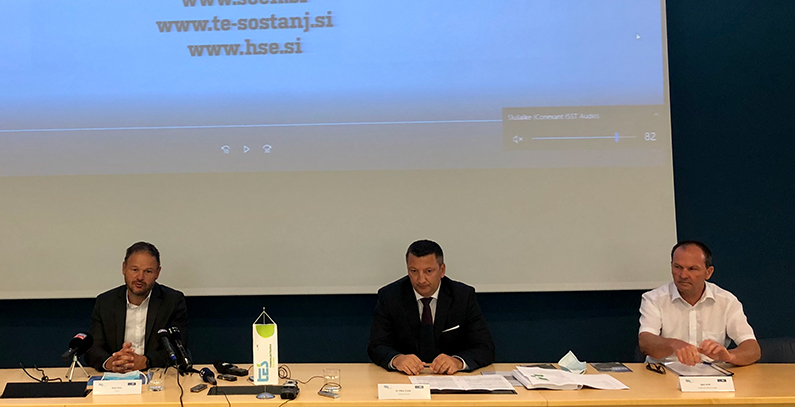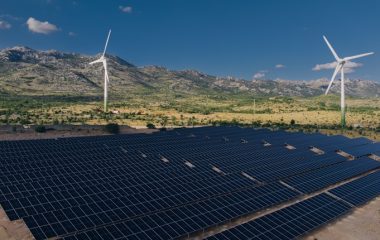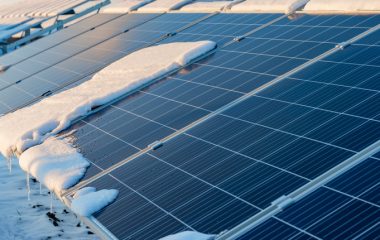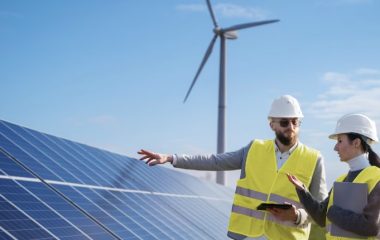
Photo: TPP Šoštanj management during the presentation of the EIA (HSE)
The management of the Šoštanj thermal power plant (TEŠ) presented the results of an environmental impact assessment (EIA) and cleared the plan to incinerate solid recovered fuel (SRF) project, arguing it does not worsen the current state of the environment in Šaleška Valley.
TEŠ, which is part of state-owned energy company Holding Slovenske Elektrarne (HSE), earlier announced that in the case of a positive EIA it would start burning SRF next year.
TEŠ has started the process of obtaining an environmental permit for the joint combustion of lignite and SRF
The EIA takes into account the environmental and human impacts that would occur during the incineration of SRF fuel and at the time of the activity’s termination.
All impacts were assessed as insignificant, HSE said.
Due to the encouraging results of the EIA, TEŠ decided to continue with the procedure, so it submitted the EIA to the Slovenian Environment Agency (ARSO), according to the press release on HSE’s website.
This is the beginning of the process of obtaining environmental consent for the co-incineration of lignite and SRF in unit 6 of TEŠ. All documentation, including the EIA, will be publicly available.
SRF is produced from non-hazardous waste – Mitja Tašler
According to the EIA, CO2 emissions would be lowered while all other environmental impacts would be within the permitted limits.
The emissions would be in accordance with regulations in Slovenia, but also with the values determined in the EU best available technologies (BAT) reference documents (BREF), according to the assessment.
TEŠ intends to burn a maximum of 160,000 tons of SRF per year
Lignite remains the primary raw material for energy production in the thermal power plant.
TEŠ intends to burn a maximum of 160,000 tons of SRF per year or a maximum of 6% of the weight of the base fuel. The addition of SRF would improve the efficiency of electricity and heat production, HSE said.
SRF would be purchased only from Slovenian producers
Mitja Tašler, Chief Executive of TEŠ, said that SRF is made by removing metals, crushing and dehydrating selected solid non-hazardous waste.
SRF would be purchased only from Slovenian producers who would ensure the quality of fuel, said Tašler, adding that the company would respond to all calls from the local community to present the results of the EIA.
In a recent interview for our portal, Tašler spoke about the projects that TEŠ intends to implement in order to complete a gradual energy transition.


















Be the first one to comment on this article.